Our Team

Adam Bessey
After graduation in June, Adam will be working as a Sales Engineer for Ascent HVAC in Danville, CA.
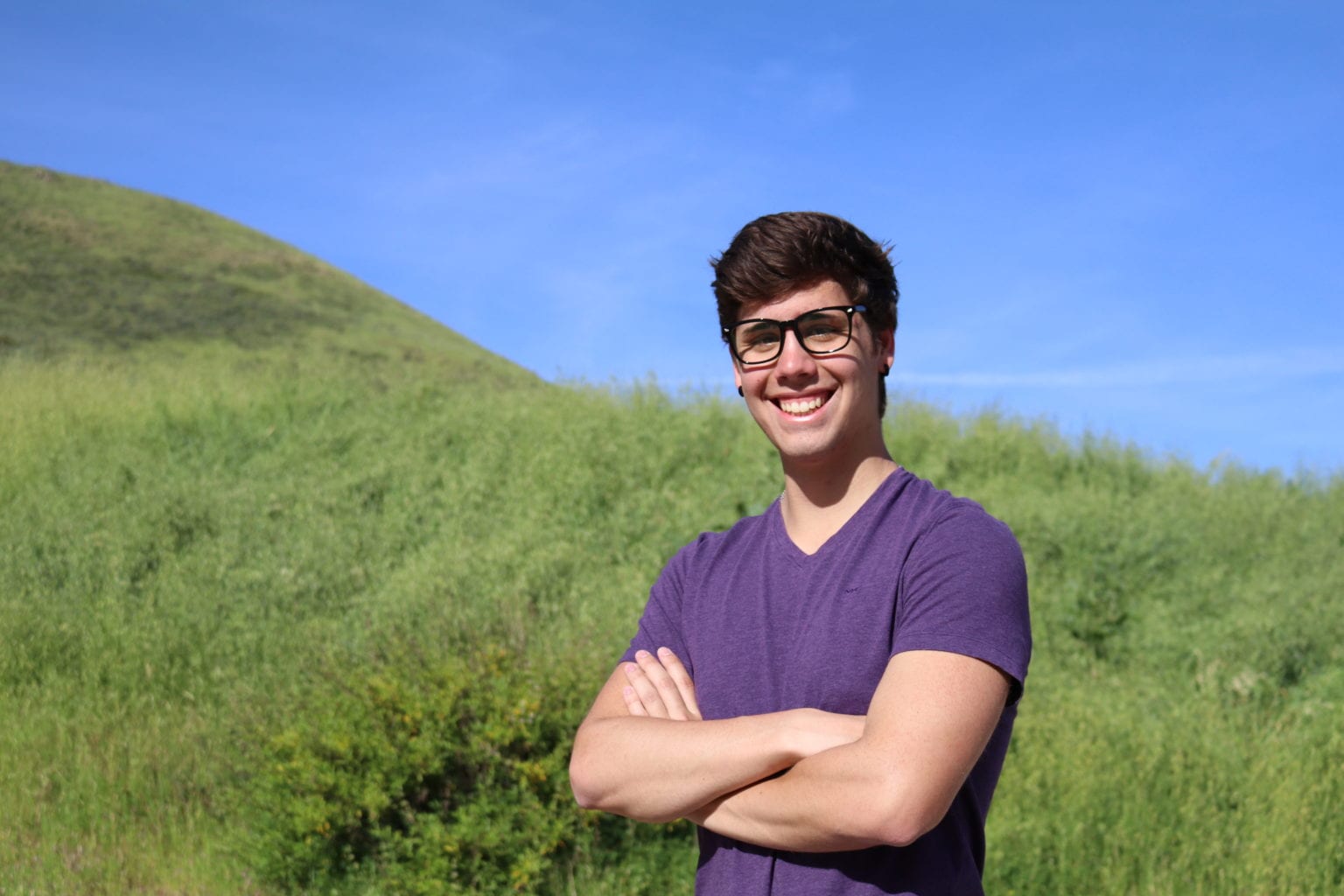
Ryan Salazar
Ryan is graduating in December 2021, and still on the hunt for a full time position post graduation. As a dedicated HVAC engineer, he plans to put his HVAC skills to use in industry anywhere he can.

Matthew Malonzo
Shortly after graduation, Matthew will be working as an HVAC design engineer at United Mechanical Inc. in San Jose, CA.
Acknowledgements
We would like to thank Professor Steffen Peuker for his guidance and mentorship throughout the duration of our design.
Our Project's Video
Our Project's Digital Poster
Pod Design
The Pod is made from a refurbished shipping container with a single door instead of the standard double doors. The shipping container includes an adjustable solar panel on top, adjusting to the optimal angle for solar energy absorption. The walls of the shipping container are fully insulated with R4.45 insulation, and the floor is covered in hard plastic to enable the hydroponic stations to roll when needed and for easy floor cleaning. The floor has a central drain bored through it, with a pipe guiding water out to the side of the Pod where it can be safely disposed of. An electrical dock runs around the Pod halfway up the wall, allowing the lights and pumps to plug in without dangling electric cables.
Equipment
Equipment selection is based on the DesignBuilder load calculations. A 3/4 Ton (9,000 Btu) split system easily covers the required loads of a single Pod, and a fresh air fan acts as an economizer, utilizing cooler outside air to cool the Pod, providing free cooling and saving energy. Because the lighting generates so much heat, the Pod requires cooling year round, so an economizer is crucial to the design while in San Luis Obispo.
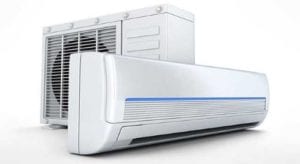
- 3/4 Ton Ductless Mini Split Air Conditioner Heat Pump used to condition the air within each Pod.

Fresh air fan used as an economizer to pull in outside air.
Hydroponics
Benefits of a hydroponic system for indoor growing:
- Hydroponics is a soil-less, water-based farming technique that relies on flowing water to transport nutrients.
- No soil means less growing space required, less water wasted, and the elimination of pests/pesticides.
- Nutrients are transported to crops through controlled delivery of water, with excess water recirculating back to the system (less water usage)
Hydroponic Techniques used:
Nutrient-Film Technique (NFT) Dutch Bucket
Dutch Bucket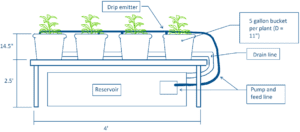 Media Bed
Media Bed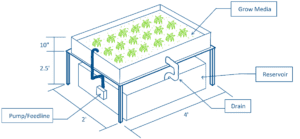 Vertical Tower
Vertical Tower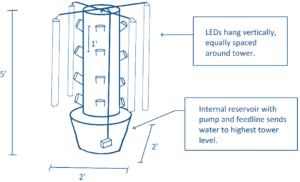
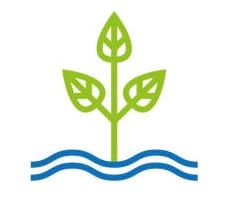
Poly Planter Pod
This project is sponsored by The Setty Family Foundation: 2021 ASHRAE Applied Engineering Challenge
Overview
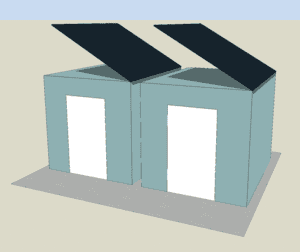
Our team designed the Poly Planter Pod, a storage container repurposed as an indoor gardening unit. Our exemplary design involves the two storage containers pictured above, each conditioned to optimize the growth of a unique group of fruits and vegetables that will successfully meet the dietary needs of a family of four in San Luis Obispo, California.
Design Conditions

Load Simulations

The figure above depicts the annual system energy demand (in kWh) for the Poly Planter Pods. The energy generation produced by the solar panels can meet the yearly heating and cooling demands of the Pods. However, the lighting demand is the largest load.

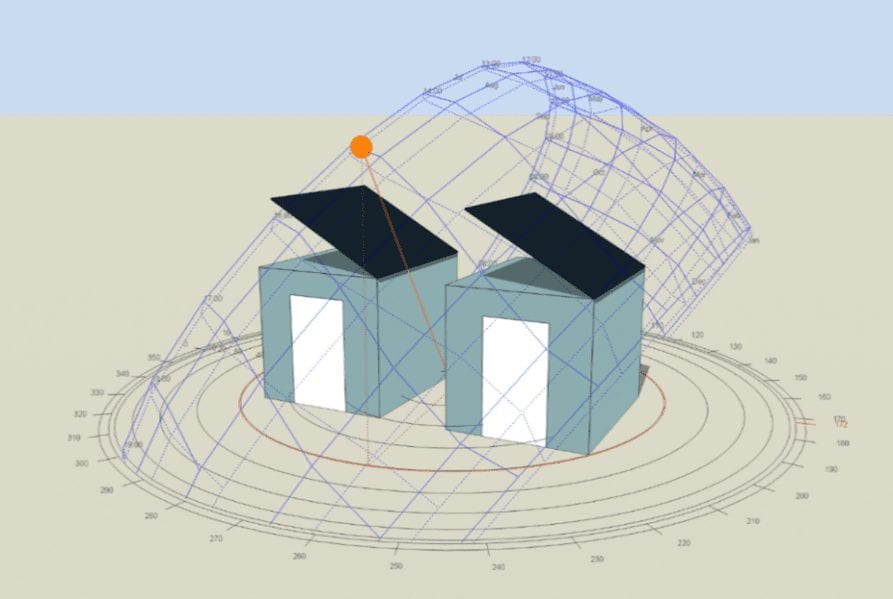
The location and angle of the sun for the San Luis Obispo area is modeled as shown. This gives possible energy absorption for the solar panels, as well as the load on the HVAC system due to solar radiation.
Garden Layout
Specifications
Pod Dimensions (each) -8’W X 10’L X 8.5’H
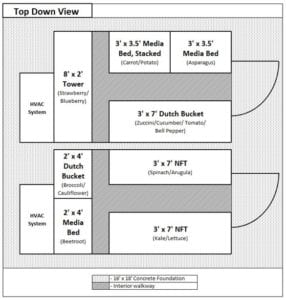
Custom Components
- 3 hydroponic systems.
- Modified shipping container.
- Solar panel setup.
- Door installation.
- Drain system.
- Water reservoirs.
Stock Components
- Hydroponic Tower system.
- HVAC system and Economizer.
- Pumps, timers.
- Lighting system.
Foods to Grow
The Poly Planter Pod system is capable of growing the following fruits/vegetables:
- strawberries/blueberries
- broccoli/cauliflower
- kale/lettuce/spinach
- carrots/potatoes
- asparagus/beetroot
- zucchinis/cucumbers/bell peppers/tomatoes
In total, the Poly Planter Pods produce 1500 pounds of vegetable/fruits in a year, which corresponds to $4500 in savings for the homeowner.
Cost Analysis
- The daily water consumption for the two Pod system is 33 gallons per day and adds $75 a year to the water bill.
- Electrical use totals to 13,120 kWh and costs an average of $2,215 a year.
- The pods initial cost for materials and installation is roughly $33,400.
- Together, the two Pods produce 1500 pounds of fruits and vegetables, which corresponds to $4500 worth of food, each year.
- With this, the two Pod design pays for itself in around 15 years.
- If a customer chooses to implement only one pod, the costs are roughly halved, but the payback period remains the same.
Capital Costs:
- $33,376 (materials and installation)
Yearly Operating/Utility Costs:
- $75/year (water demand)
- $2,215/year (electrical demand)
- 1500 pounds (assorted vegetables and fruits)
- $4500 of produce (of selected plants)
Pay Back Period
- 7.4 years to pay off (capital costs alone)
- 15 years to pay off (with added yearly utility costs)
Analysis
- 15 years is a reletively short time to pay off an investment of this size when adding it to a residence or housing construction.
- The pods are sturdy and built to last well over 30 years if properly maintained.
- This design allows for the plants grown to retain all their nutrients, having zero travel time from farm to table.
- It is a viable investment for anyone looking to fill a healthy diet and grow their own food.

